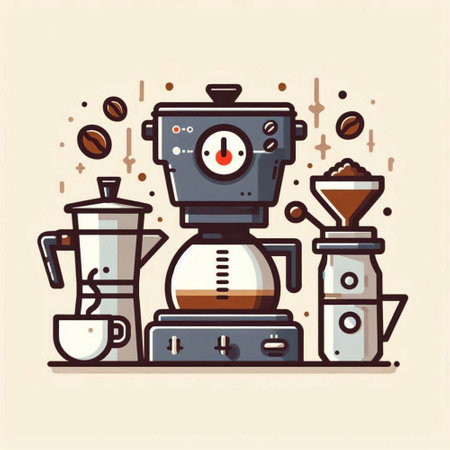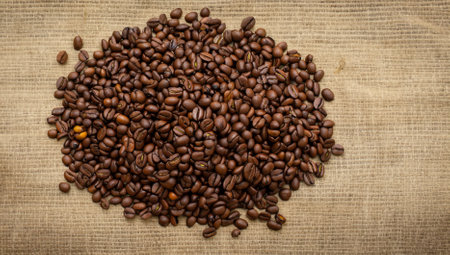1. Choosing the Wrong Type of Coffee Maker
One of the most common mistakes first-time coffee maker users make is picking a machine that doesn’t actually fit their daily routine or coffee preferences. With so many options on the market, it’s easy to get caught up in flashy features or trendy brands without considering what you really need. For example, drip coffee makers are perfect for households that drink multiple cups a day or enjoy brewing a full pot at once—think busy families or shared apartments. Single-serve machines, like Keurig or Nespresso, cater to those who value convenience and quick brewing for just one cup at a time, making them ideal for solo drinkers or people always on the go. Espresso machines are best suited for users who crave café-style drinks and don’t mind learning a bit about grind size, tamping, and frothing milk. Before buying, ask yourself: Do you want speed or flavor depth? Will you brew for a crowd or just yourself? Matching your lifestyle and taste preferences to the right type of coffee maker is essential to avoid buyer’s remorse and ensure you get the most out of your daily cup.
2. Incorrect Coffee-to-Water Ratio
One of the most common mistakes first-time coffee maker users make is getting the coffee-to-water ratio wrong. Achieving the perfect cup of coffee depends heavily on using the right amount of ground coffee and water. If you use too much coffee or not enough water, your brew will taste bitter and overly strong. On the other hand, using too little coffee or too much water results in a weak, watery cup that lacks flavor.
The importance of measuring both coffee and water accurately cannot be overstated. Most American coffee makers come with a scoop and marked reservoir for this purpose, but many users overlook these guides or simply eyeball measurements. This often leads to inconsistent results and wasted grounds.
Common Pitfalls
- Overfilling the Filter Basket: Adding too much coffee can cause overflow, clogging, or a bitter taste due to over-extraction.
- Underfilling the Filter Basket: Too little coffee leads to under-extracted, sour, or bland brews.
- Overfilling the Water Reservoir: Excess water can dilute your coffee and sometimes spill out during brewing.
- Underfilling the Water Reservoir: Not enough water may result in burnt-tasting or concentrated coffee and could damage your machine over time.
Recommended Coffee-to-Water Ratios
| Cup Size (oz) | Coffee (tablespoons) | Water (cups) |
|---|---|---|
| 6 | 1 | 1 |
| 12 | 2 | 2 |
| 24 (Full Pot) | 4 | 4 |
Tip: In the U.S., a standard “cup” in coffee makers typically refers to 6 ounces of water, not an actual 8-ounce measuring cup.
Avoiding Measurement Mistakes
Always use the provided scoop or measure your grounds with a tablespoon for consistency. Fill the reservoir with filtered water up to the correct line for your desired number of cups. By paying attention to these details, you’ll ensure each pot delivers rich flavor—just how you like it—and avoid common pitfalls that leave many new users disappointed with their brew.

3. Neglecting Regular Cleaning and Maintenance
If you’re new to coffee makers, it’s easy to overlook the importance of consistent cleaning and maintenance. However, skipping these steps is one of the fastest ways to end up with stale-tasting coffee or even a broken machine. Every time you brew, coffee oils and mineral deposits can build up in various parts of your maker. If left unchecked, these residues don’t just affect flavor—they can also clog internal components, leading to costly repairs or total breakdowns.
Start by focusing on the removable parts. The carafe, filter basket, and water reservoir should be rinsed or washed after every use. This helps prevent the development of mold, bacteria, or bitter flavors that can ruin your next cup. Most American households find it easiest to toss dishwasher-safe parts into the top rack for convenience—just double-check your manufacturer’s recommendations first.
Descaling is another crucial step many first-time users skip. Hard water minerals accumulate inside the machine over time, especially in places like New York or Los Angeles where tap water is notoriously mineral-rich. Run a descaling cycle using a solution recommended by your coffee maker brand or a mix of vinegar and water every 1-3 months (frequency depends on usage and local water hardness). This not only preserves the lifespan of your machine but also ensures consistently fresh-tasting coffee.
Finally, always follow the manufacturer’s maintenance instructions. Brands like Keurig, Breville, and Mr. Coffee provide specific guidelines tailored to their models. Ignoring these recommendations could void your warranty or lead to preventable malfunctions. Keeping up with routine maintenance is a small investment of time that pays off with better-tasting coffee and fewer headaches down the road.
4. Using the Wrong Grind Size
One of the most overlooked mistakes new coffee maker owners make is using the wrong grind size for their machine. Not all coffee makers are created equal, and each type demands a specific grind size to function optimally. For example, drip coffee makers typically require a medium grind, while espresso machines demand a much finer consistency. If you use grounds that are too fine in a drip brewer, they can clog the filter basket, causing overflow or even damaging the appliance over time. On the flip side, using grounds that are too coarse for an espresso machine leads to under-extraction—resulting in weak, watery coffee that lacks flavor and body.
How Grind Size Impacts Your Coffee Maker
| Coffee Maker Type | Recommended Grind Size | Potential Issues with Wrong Grind |
|---|---|---|
| Drip Coffee Maker | Medium | Clogging if too fine; weak brew if too coarse |
| Espresso Machine | Fine | Under-extraction if too coarse; machine blockage if too fine and tamped hard |
| French Press | Coarse | Muddy cup and plunger clogging if too fine; weak flavor if too coarse |
| Pour Over | Medium-Fine | Bitter taste if too fine; sour or thin brew if too coarse |
| Keurig/Single Serve Pod Machines | Medium-Fine (pre-packed pods) | Ineffective extraction with DIY grinds; potential clogging with too-fine ground coffee in reusable pods |
Selecting the Right Grinder Matters Too
The consistency of your grind is just as important as the size itself. Burr grinders are generally recommended over blade grinders because they offer more uniform results—essential for achieving proper extraction and protecting your machine from uneven wear or jams.
Avoid Costly Repairs and Bad Brews
If you want both great-tasting coffee and a long-lasting appliance, always match your grind size to your coffee maker’s needs. Consult your user manual or manufacturer’s recommendations before brewing. A small adjustment in grind size can mean the difference between rich, flavorful coffee and a disappointing cup—or worse, costly repairs down the road.
5. Ignoring Water Quality
One of the most overlooked mistakes first-time coffee maker users make is not paying attention to the quality of water they use. While it might seem convenient to just fill up your coffee maker with tap water, this can have a significant impact on both your machines performance and the taste of your coffee. In many parts of the U.S., tap water can be hard—meaning its loaded with minerals like calcium and magnesium—or it may be heavily chlorinated. Both scenarios spell trouble for your brew.
How Hard Water Affects Your Coffee Maker
Hard water leaves mineral deposits, or scale, inside your coffee maker’s internal components over time. This buildup can clog pipes, reduce heating efficiency, and eventually lead to costly repairs or even machine failure. Some coffee makers come with built-in water filters, but most entry-level models do not, making this issue even more important for beginners.
The Impact on Coffee Flavor
Chlorinated or mineral-heavy water doesn’t just harm your equipment—it also messes with your coffee’s flavor profile. Chlorine can impart an unpleasant chemical taste, while excess minerals can result in a dull or bitter cup that masks the true notes of your beans.
Better Alternatives: Filtered or Bottled Water
To avoid these pitfalls, consider using filtered or bottled water instead of straight tap. A simple pitcher filter can remove chlorine and reduce hardness, improving both the longevity of your machine and the clarity of your coffee’s flavor. For the best results, use water that’s fresh, clean, and free from strong odors or flavors. Investing in good water isn’t just about protecting your gear—it’s about unlocking the full potential of every cup you brew.
6. Attempting to Brew Without Reading the Manual
One of the most common mistakes among first-time coffee maker users is skipping the user manual and jumping straight into brewing. While it might seem like a hassle, each coffee maker model—whether its a drip machine, single-serve pod brewer, or an advanced espresso unit—has its own set of features, settings, and safety precautions. The user manual is designed to help you navigate these differences and maximize your coffee experience.
Why the Manual Matters
Coffee makers today come equipped with programmable timers, adjustable temperature controls, specialty brew modes, and even descaling alerts. If you don’t read the manual, you’re likely to miss out on unique functionalities that could improve your cup quality or simplify maintenance. For instance, some machines have a pre-infusion setting for better flavor extraction, while others offer cleaning cycles that need specific steps to activate.
Understanding Safety Precautions
Each brand and model has its own safety recommendations—some require particular water types to avoid mineral buildup, others caution against using certain cleaning agents or overfilling reservoirs. Ignoring these guidelines can lead to malfunctions or even void your warranty.
Unlocking Full Potential
By thoroughly reviewing the user manual before your first brew, you’ll not only protect your investment but also ensure you’re getting the best possible results from your equipment. Take time to familiarize yourself with all the features and troubleshooting tips provided by the manufacturer—it’s a small step that pays off in consistently great coffee and a longer-lasting machine.
7. Overlooking Safety Precautions
One of the most common—yet easily preventable—mistakes first-time coffee maker users make is neglecting essential safety precautions. Coffee machines, whether single-serve pod systems or classic drip brewers, involve both electricity and hot water, making it crucial to use them with care. Always place your coffee maker on a flat, stable surface; this reduces the risk of accidental tipping, especially in busy kitchens or if you’re half-awake during your morning routine.
Another important point: keep electrical cords away from water sources. It’s tempting to tuck cords out of sight behind a sink or near a water dispenser, but this creates a serious shock hazard. Make sure cords are dry and not stretched across wet countertops or hanging over the edge where they could be snagged.
Finally, don’t underestimate how hot components like the carafe, filter basket, or even the steam vent can get. Use caution when removing or handling these parts right after brewing. Many models now feature insulated handles and warning labels, but it’s still smart to let things cool slightly before cleaning or refilling. Following these simple steps goes a long way toward ensuring your brewing experience is as safe as it is satisfying.


